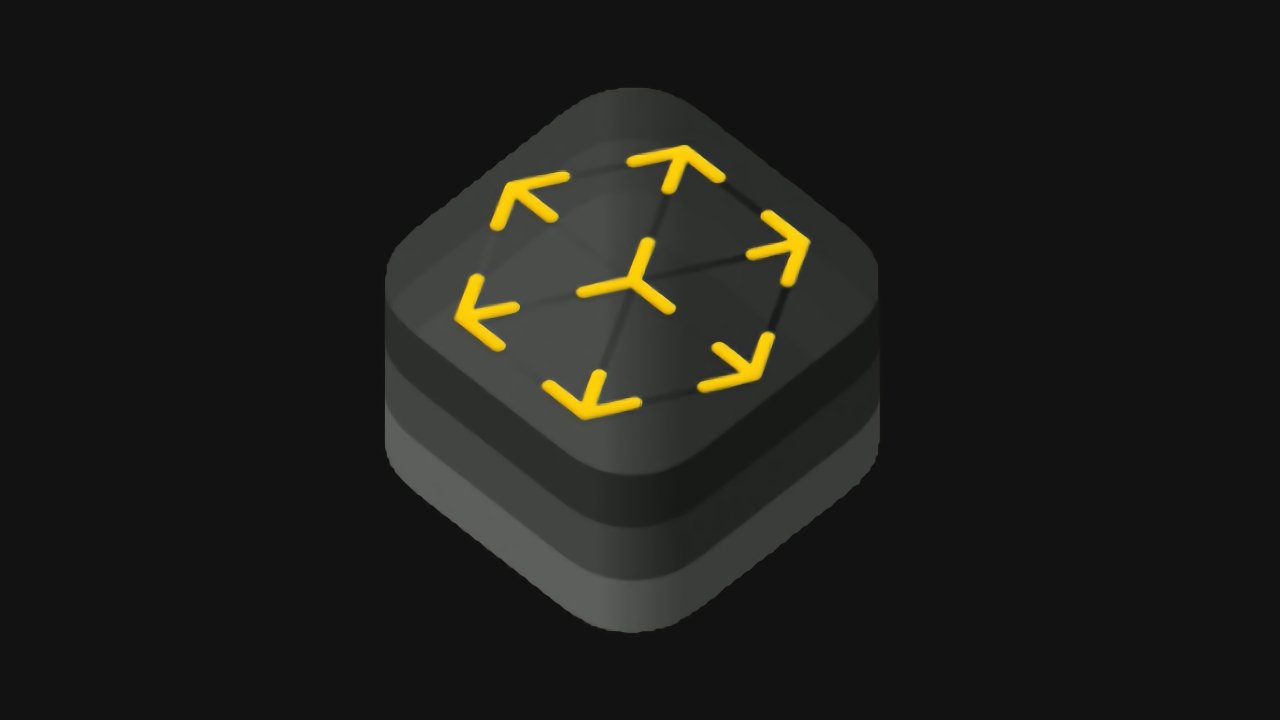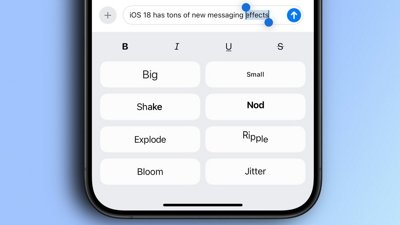Apple is researching how to present a 3D Apple AR image on a flat screen, like that of an iPhone or iPad.
Just because Apple has successfully been granted a patent on new technology, it doesn't automatically guarantee that there will be a future product that uses it. Sometimes the patent is the smallest glimpse into a bigger plan that leaves you wondering what else is being done around it.
That's the case with the newly-granted patent called "Split-screen driving of electronic device displays." Apple is quite clear about what it does, but the patent's discussion focuses so specifically that it leaves you asking questions.
What Apple describes here is an ability to have a flat screen show a 3D image. So aniPad or an iPhone could show an AR or VR video without the user having to wear a headset like "Apple Glass."
It's just far from easy.
"[It] can be difficult to provide this type of content on a multi-function device such as a smartphone or a tablet," says Apple, "without generating visible artifacts such as motion blur, luminance offsets, or other effects which can be unpleasant or even dizzying to a viewer."
"Apple Glass," or any headset, will position a screen in front of each eye. They work in concert, but the two are separate. It's not as if it's simple to send separate images to each screen and keep them in sync, but what each eye sees is under the device's control.
With an iPhone or iPad flat on your desk, or held in your hand, the device can't count on which direction you're looking. It also can't count on the fact that you're looking, although Apple has previously applied for at least one patent on gaze detection.
What this newly-revealed patent does not cover is how a user might look at the screen, how precisely it needs them to hold the device. What it does cover, though, is how the screen acts to pull this off.
It starts with how we've actually seen flat screens do this before — in feature films.
"For example, a movie theater can provide polarized or colored glasses or goggles to patrons that visually separate two concurrent (and commonly overlapping) images that, due to the separation of the viewer's eyes, add three-dimensional depth to the displayed concurrent images," says Apple.
"This depth can be used to provide virtual reality (VR) content in which a three-dimensional computer-generated immersive environment is created for the user," continues the patent, "and/or to provide augmented reality (AR) content in which computer-generated content is added to a direct or camera-generated view of the real-world environment surrounding the user."
As long as you can split the image so that one goes to each eye, you can conjure up the 3D effect. Apple doesn't describe ways of making sure that each eye is entirely prevented from seeing what's aimed at the other, but it does detail how the screen can show two different images.
"A display includes an array of display pixels," explains Apple. "The array of display pixels is arranged in pixel rows and pixel columns." The patent notes that usually these displays "operate rows of pixels in a sequential manner from the top to the bottom of a pixel array," but that needn't be the case.
In fact, it mustn't be the case. For however you present two images, doing it a row of pixels at a time "can cause a visible systematic luminance offset for the left and right portions of the display" when the image is a split screen one.
"This can be particularly problematic if backlight strobing or pulsing is implemented to reduce motion blur," continues Apple.
Apple's proposal is that different lines of pixels be controlled separately, and used to show the two different images. "[In] split-screen mode, the pixel rows... are alternatingly operated."
The majority of the patent then describes different display technologies, and also different methods of ensuring images are kept in time.
This patent is credited to eight inventors, including Jun Li, whose previous work includes a patent on manufacturing touch screens.
Stay on top of all Apple news right from your HomePod. Say, "Hey, Siri, play AppleInsider," and you'll get latest AppleInsider Podcast. Or ask your HomePod mini for "AppleInsider Daily" instead and you'll hear a fast update direct from our news team. And, if you're interested in Apple-centric home automation, say "Hey, Siri, play HomeKit Insider," and you'll be listening to our newest specialized podcast in moments.
 William Gallagher
William Gallagher



 Malcolm Owen
Malcolm Owen
 Oliver Haslam
Oliver Haslam
 Amber Neely
Amber Neely
 Marko Zivkovic and Mike Wuerthele
Marko Zivkovic and Mike Wuerthele

 Andrew Orr
Andrew Orr

-m.jpg)









1 Comment
The width of an iPhone 12 mini is 62 mm. The distance between the pupils of adult is between 54-74mm. Has any software developer ever tried to take advantage of this by displaying two separate images on two neighboring iPhones and letting the viewer's eyes (by relaxing them) make the adjustment needed to see a 3D image?
Im sure Apple won't mind if users are required to buy a second iPhone to get a 3D image.